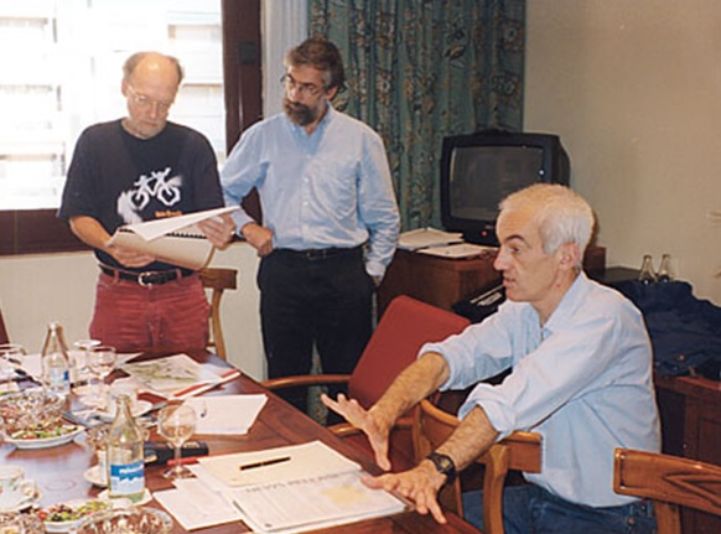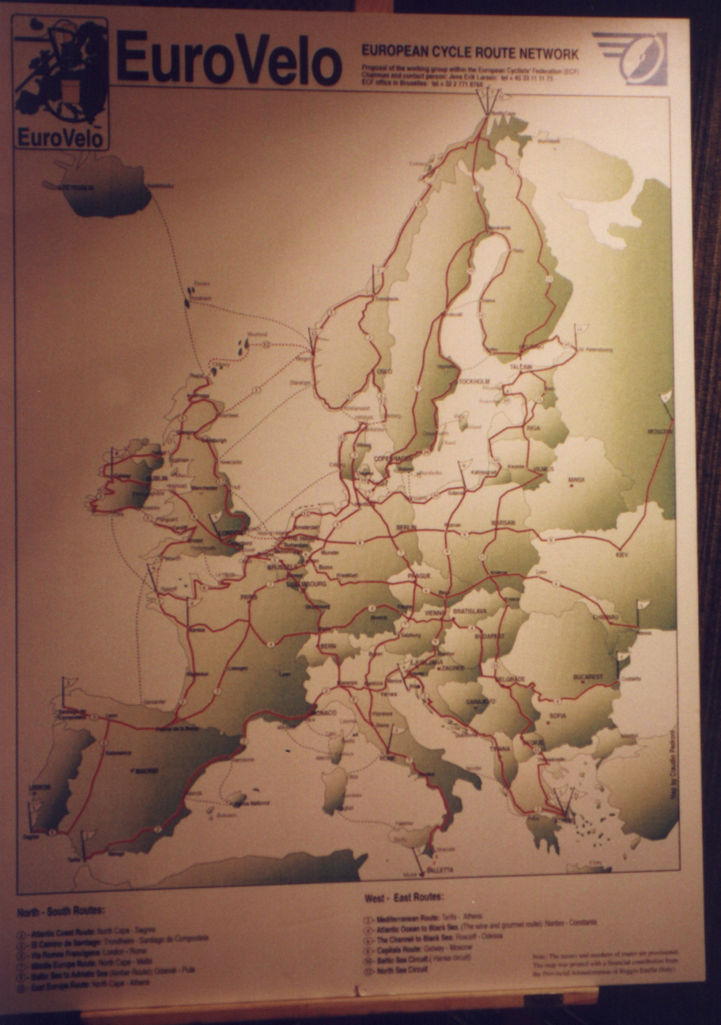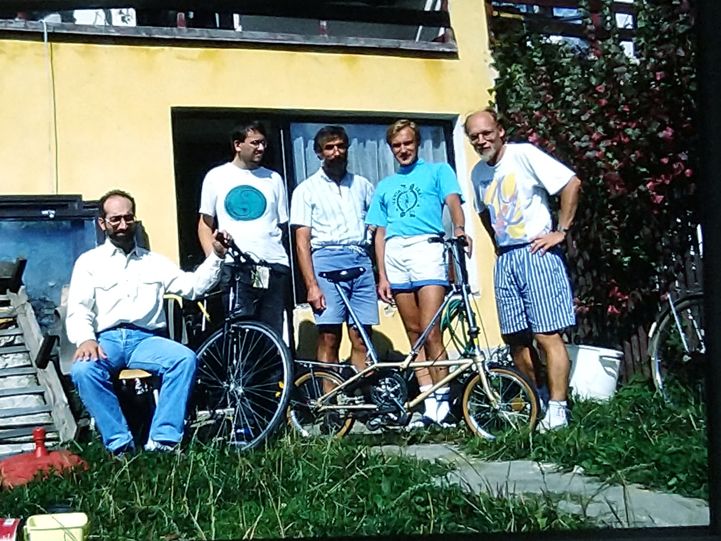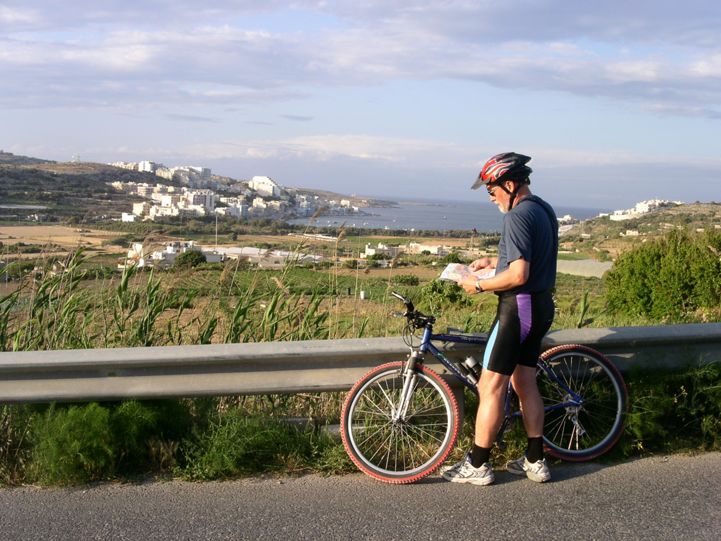EuroVelo, an exciting journey
The planning of the national cycle route network in Denmark was a direct inspiration for the creation of EuroVelo. The Danish cycle network was probably the first official national cycle route network in Europe, as it was launched in May 1993. Since the beginning, the vision was international, and the scope was to make more people cycle in Denmark and in Europe. It was therefore natural to plan a European cycle network, and the work started on the following year, in 1994.
The very beginning
The project started its development in 1995-1996 within the European Cyclists’ Federation (ECF), which was in turn founded in 1983. A working group, which I chaired, was established during the Annual General Meeting held in Brussels on 9-11 June 1995. The first working group meeting took place in Cheb, Czechia, on 15 September 1995. I remember that we were lying on the floor drawing lines on the map of Europe, suggesting routes to unite the continent. Later that year, we finalised a proposal for 12 European Cycle Routes. We also had the first EuroVelo map and logo, drawn by Claudio Pedroni of FIAB (Italy).

Back then, we tried to contact and involve stakeholders and professionals from several European countries. The working group was composed of myself, Rein Lepik (Estonia), Chris Heymans (SLF), Richard König (ADFC) and Martin Robes (Czech and Slovak Trafic Club). Other members of the working group were András Tóth (Hungaria) and Camille Lalande (France).
Two conferences as milestones
Two conferences provided further inspiration and ideas for the establishment of EuroVelo. The first one was held in Amersfoort, The Netherlands, on 2 February 1995 and was about the national cycle route networks. The second one took place in Bruges, Belgium, on 10-11 May 1996. The topic was “Cycling without borders” and focused on the international aspect of cycle routes. It was the first time that professionals of long-distance cycle routes gathered and it was a turning point for the full-fledged development of the initiative.

The planning process sped up in September 1996, when we decided on a map and a logo at a meeting in Brussels with Claudio Pedroni, Philip Insall, Marie-Caroline Coppieters, Joaquin Jimenez and Chris Heymans. During 1996-1997, we started planning a launch event and we applied for European Union funding to establish EuroVelo, working to get match funding from several organisations across Europe.

EuroVelo becomes reality
Thanks to the success of the match funding campaign, a new era could start. On 21 November 1997, EuroVelo was launched in Logroño, Spain. Back then, Robert Coleman, Director of Transport at the European Commission said: “International cycle tourism is already an economic force, and there is significant untapped potential which could be released by an effective marketing strategy”.

In 1998, ECF, Sustrans (United Kingdom) and Frie Fugle (Denmark) signed a contract for the management of the project. The work included communication with printed newsletters, a business plan, various manuals and feasibility studies for each route. In June 1998, the first prospect about EuroVelo’s development and background was published. In the following years we produced EuroVelo Newsletters and received grants from the European Commission – DG Transport, leading to the opening and launch of the first EuroVelo route, EuroVelo 12 – North Sea Cycle Route in 2001.
A driving force in Europe
In 2007, Sustrans and Frie Fugle transferred the management of the initiative to ECF and the EuroVelo Council was established as the board to advise ECF on the advancement and development of the project. Since 2007, many more routes have been developed, totalling 17 routes and over 90,000 km, 64% of which are developed. A great achievement!
I sat in the EuroVelo Council until October 2021. Being a part of EuroVelo has been a fantastic journey for me. I especially appreciate how, thanks to EuroVelo, cycling facilities increased and developed even in countries where cycling was not so popular, such as in southern and eastern Europe.

EuroVelo will be celebrating its 25th anniversary with an online event on 21 November 2022 from 14:30 to 16:30 CET. Join us in the discussion about EuroVelo's history and future, and cycle tourism in Europe! Read more information on the programme and the speakers and register your participation at this link.
Author: Jens Erik Larsen
Cover picture: The EuroVelo launch conference of 21 November 1997 in Logroño. From left to right: Joaquin Jimenez, Chris Heymans, Carmen Aycart, and Jens Erik Larsen
Read about Vias Verdes' - Spanish Railways Foundation (FEE)'s contribution to the creation of the EuroVelo network here.